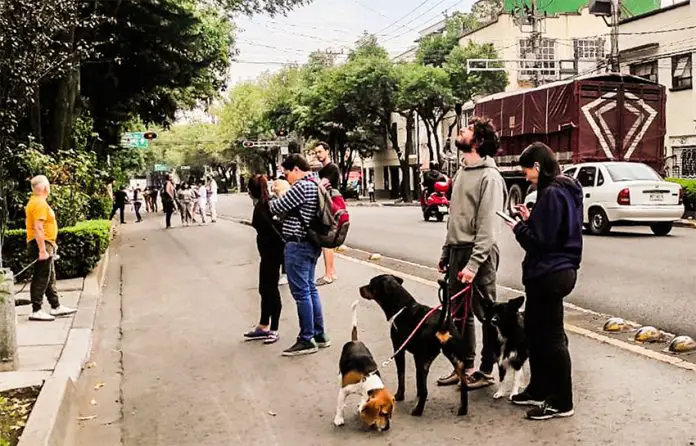Mexico City residents rushed out of buildings early Friday afternoon when the capital’s earthquake alarm went off.
But it turned out to be a false alarm.
At 1:09 p.m. — 29 minutes after the alarm sounded — the Center for Seismic Instrumentation and Registry (CIRES) issued a statement saying that the alarm’s activation was a mistake.
“During the preparations for the next National Drill that will take place on September 19, we activated by mistake the signal of the Mexican Seismic Alert System today at 12:40,” CIRES said.
The National Seismological Service confirmed on X that no major earthquake that would warrant the activation of the alarm had occurred.
Before reporting the accidental activation of the alarm, CIRES said that an earthquake had in fact occurred near the Puebla-Guerrero border. That post to X was later deleted.
🚨#ÚLTIMAHORA | Suena alerta sísmica en CdMx
Así lucen las calles tras la evacuación de edificios en la capital.
(📹: MILENIO)https://t.co/cPAGawJUAf pic.twitter.com/sf8MB4CAvr
— Milenio (@Milenio) August 2, 2024
Mexico City Mayor Martí Batres also deleted a social media post referring to an apparent earthquake.
While earthquakes are no laughing matter, there were some humorous responses to CIRES’ post informing citizens that the alarm’s activation was accidentally.
“At least pay for the bolillo [bread roll],” wrote X user Lizzet Arriaga.
That was a reference to the Mexican adage “un bolillo pa’l susto,” or “a bollilo for the fright.”
NBC News reported in 2023 that there is “a scientific basis to support this ancient custom” of eating a bollilo after a fright, as the consumption of one “mitigates the feeling of anguish and emptiness in the stomach,” according to gastroenterologist and researcher Nayeli Ortiz Olvera.
Another social media user suggested that a participant in the government’s apprenticeship program, Youths Building the Future, accidentally activated the earthquake alarm.
“Damn youth destroying the future,” wrote an X user called Jerry Solís.
“Hopefully your work contracts aren’t rescinded by mistake,” wrote user @javosanl.
Mexico City’s earthquake alarm is amplified through loudspeakers situated across the capital. It usually sounds about a minute before a quake, although the time varies depending on the location epicenter. It gives residents a brief window of opportunity to evacuate to the safety of the street and thus avoid the risk of a building collapse.
The last earthquake that caused major damage in Mexico City was the 7.1 magnitude 2017 Puebla earthquake, which occurred on Sept. 19 of that year.
The temblor, which occurred on the 32nd anniversary of the destructive 1985 Mexico City earthquake, killed 370 people and injured over 6,000.
Mexico News Daily
